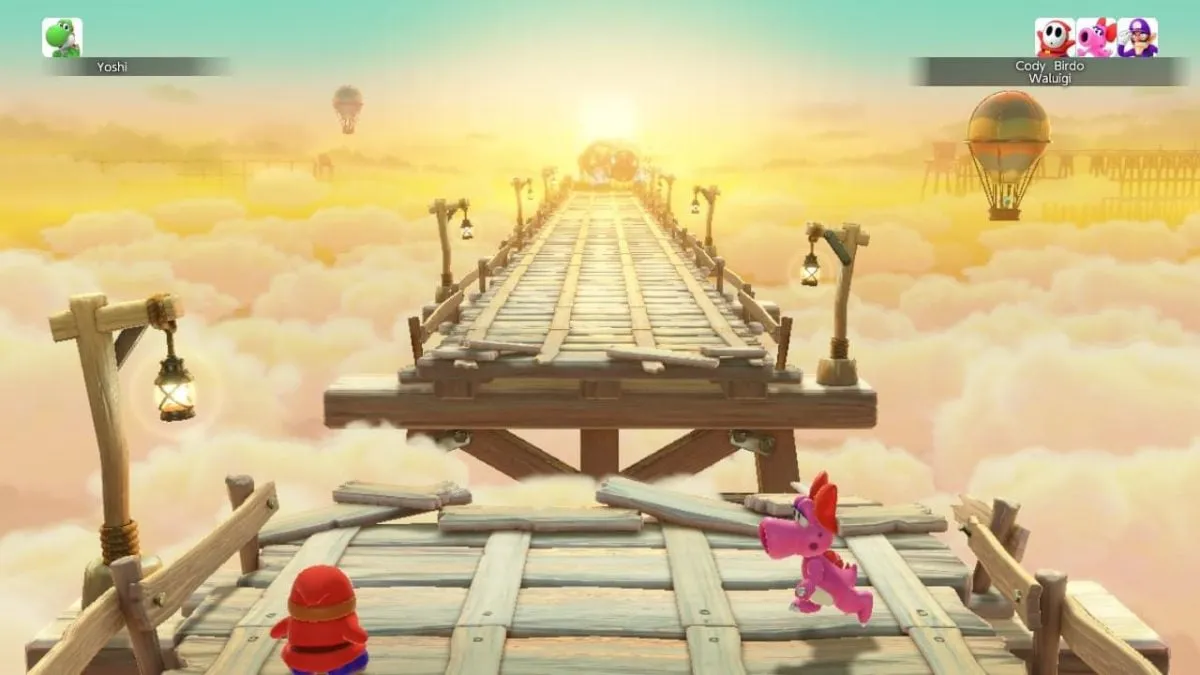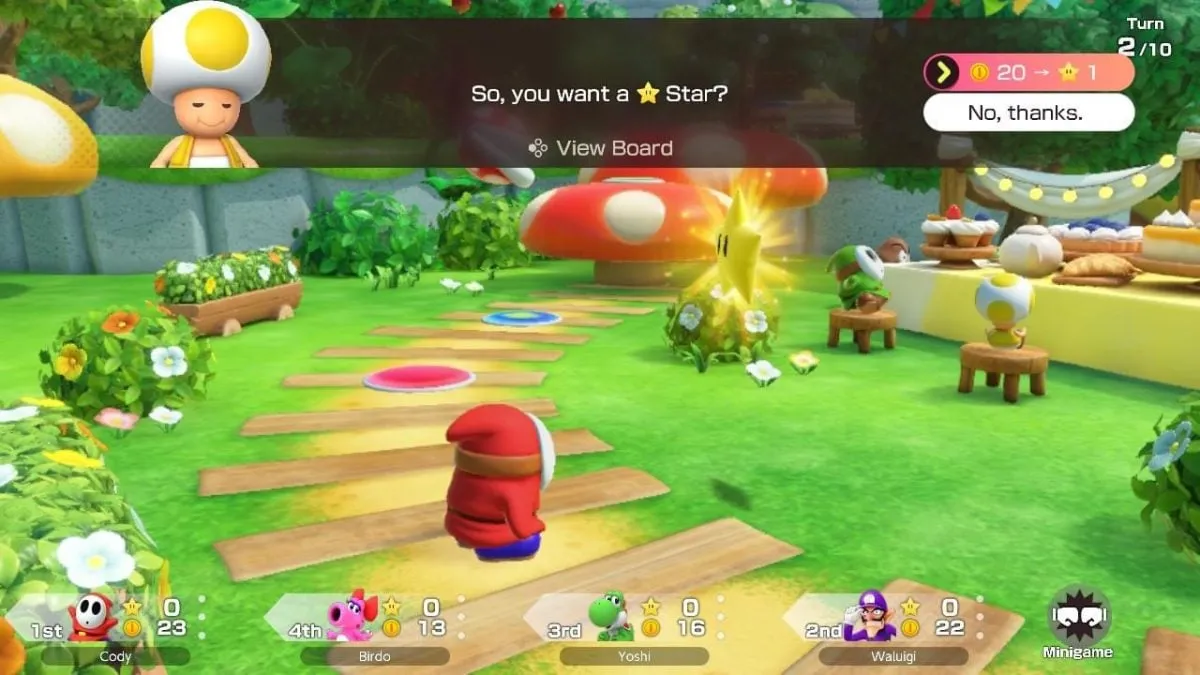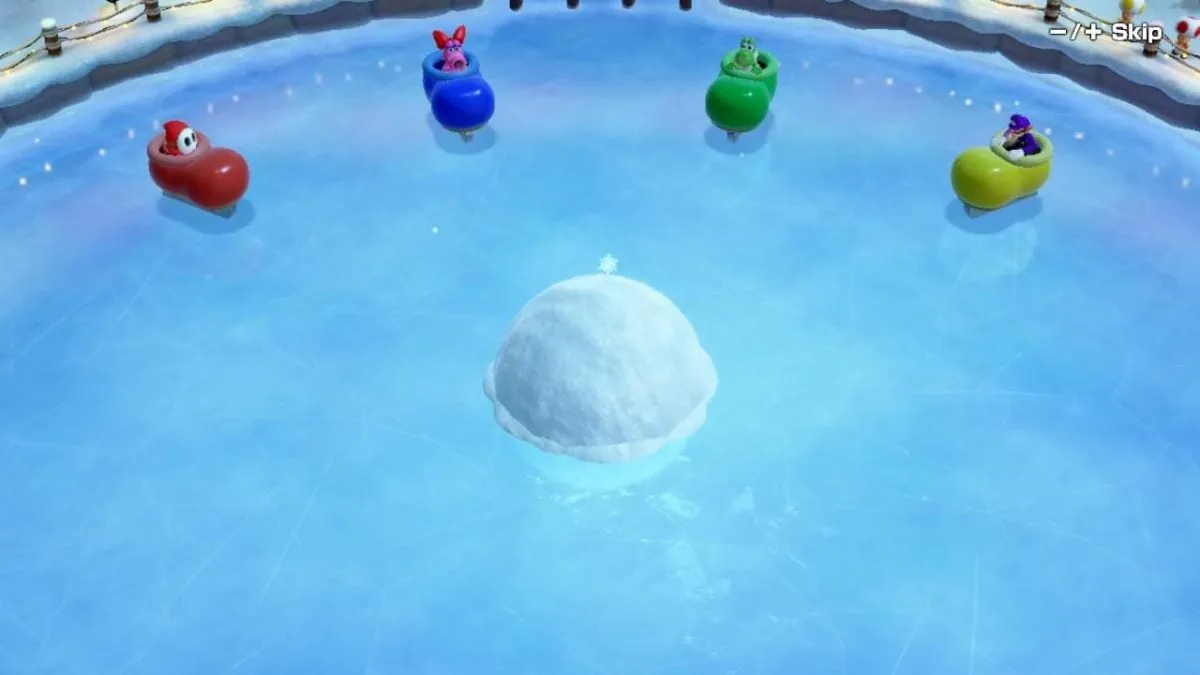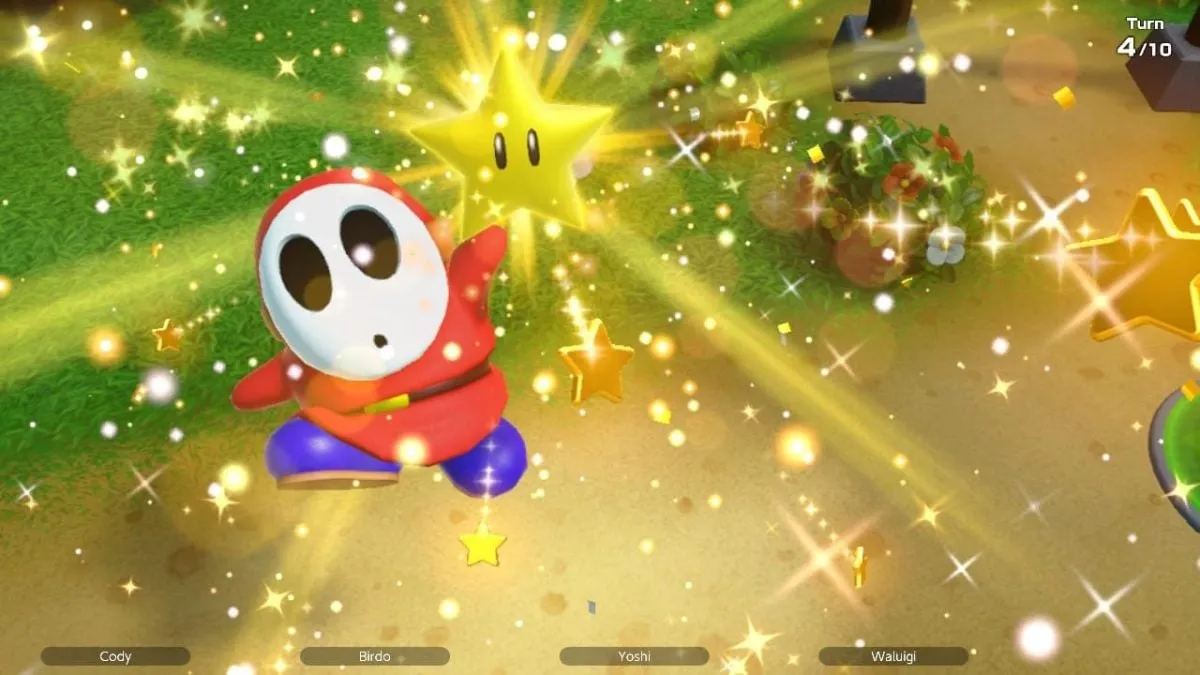After spending so much time with the Mario Party series on the Nintendo 64, it’s finally time to dive into the fun of Super Mario Party Jamboree on the Switch. This recent addition is brimming with an impressive array of content. Although not all mini-games and modes stand out, this title has provided me with the most enjoyment I’ve experienced with a party game in quite a while.
In Super Mario Party Jamboree, players can explore different islands, partake in shopping, and discover a variety of game modes. Each island offers its unique game mode, featuring options from Minigame Island to Bowser’s Challenges and the classic Mario Party island.

Most of the excitement unfolds on the Mario Party island, where players can choose from a roster of 20 characters (plus two unlockables) drawn from the franchise. The lineup features familiar favorites like Mario, Peach, and Bowser, along with some interesting newcomers such as Ninji and Shy Guy, who quickly became my preferred choices.
The game offers seven diverse boards, four of which are available initially. Each board presents a distinct atmosphere and features unique mechanics. For example, the Mega Wiggler board allows players to traverse a straightforward forest with limited areas that impose challenges.
Central to this board is the Mega Wiggler, which moves unpredictably. Players have the option to hop on its back, potentially leading them to unexpected spots on the board, adding an exciting risk-and-reward dynamic. Do you take the chance for a shortcut on Mega Wiggler, or play it safe?
The other boards, including two nostalgic returns from the N64 era, feature their own unique thrills. My personal favorite, Rainbow Galleria, showcases a vibrant shopping mall complete with escalators for speedy navigation between levels and collectible stamps. Meanwhile, Roll ‘Em Raceway provides a quirky racing experience that manages to maintain a level of control among the chaos.

The main objective in each board of Super Mario Party Jamboree is to accumulate the most stars by the end. Players take turns rolling dice, with opportunities to land on spaces offering random items or face penalties on red spaces where they might lose coins.
Scattered throughout the boards are shops, where players can invest in extra dice, special dice, or items that can sabotage opponents. After every round of turns, a minigame is triggered, and with over 110 minigames available, it took several matches before I encountered repeats.
Minigames show considerable diversity, featuring modes for one-on-one battles or team play (3 vs. 1). For example, in the free-for-all game Light-Wave Battle, players must dodge waves launched by opponents while competing to remain standing. Players may strategize by jumping to evade danger or striking back with ground pounds, which, while powerful, leave them exposed for a moment.
Even the simpler minigames possess intriguing depths. Players need to decide whether to prioritize jumps for defense or take risky actions to counter opponents actively. Additionally, modes pitting one player against three can lead to captivating dynamics, as in the case where one controls a Bomber Bill and aims to eliminate the others within a set number of rounds.

Additional minigames range from ice skating for coins to a whack-a-mole twist, showcasing impressive variety and ensuring that the minigames remain entertaining. Each round’s minigame served as one of the highlights of the experience.
However, as I played more, I noticed some repetition among the games. While exceeding 110 in total, many of these modes share similar mechanics. It’s notable that a significant number involve escape sequences, and the differentiation tends to rely on visual tweaks rather than substantive changes.
Outside the primary board game experience, other modes are available in Super Mario Party Jamboree, though these can detract from its overall quality and engagement. Special game modes on various islands include the awkward Paratroopa Flight School, which requires cumbersome motion controls, resulting in a frustrating experience.
Rhythm Kitchen aims for cooking challenges through food-related minigames, but lacks clarity in its scoring system, leading to confusion. Other forgettable modes, like Toad’s Item Factory—which involves maneuvering balls to designated areas—and motion control-exclusive games, add little to the overall experience.

The Koopathlon appears enticing as a large-scale, 20-player online mode, yet it tends to become chaotic quickly. The sheer volume of participants can overwhelm the gameplay, leading to repetitive minigames that are less engaging. Minigame Island, featuring a rotation of minigames alone, feels slightly more engaging but still loses appeal over time.
The standout extra mode for me was the Bowser mode, where seven players cooperate to defeat an Impostor Bowser through a series of inventive minigames. While this unique co-op PvE approach is refreshing, the mode is limited to just 10 distinct minigames.
Nonetheless, these additional modes are merely supplementary content. Their impact is minimal, overshadowed by the outstanding quality of the main board game experience offered by Super Mario Party Jamboree. I found joy in all seven available boards and would be eager to return to them. Playing offline with friends has provided me with the most exhilarating moments I’ve witnessed in a party game. The extensive variety and delightful chaos made each match feel fresh and distinct. Even competing against bots, typically less enjoyable in my experience, proved to be fun and engaging.
Ultimately, Super Mario Party Jamboree ranks among the best in its series. It boasts an impressive wealth of content ranging from quality boards to characters and mini-games. This variety stands strong enough to uphold the game on its own merits, and the excellence of core gameplay makes for an extraordinary experience across different types of minigames. Although most additional modes fall flat aside from Bowser Kaboom Squad, they do not diminish the exceptional solo and multiplayer experience that Super Mario Party Jamboree delivers.
Mark your calendars: Super Mario Party Jamboree will launch exclusively for the Nintendo Switch on October 17, 2024.




Leave a Reply